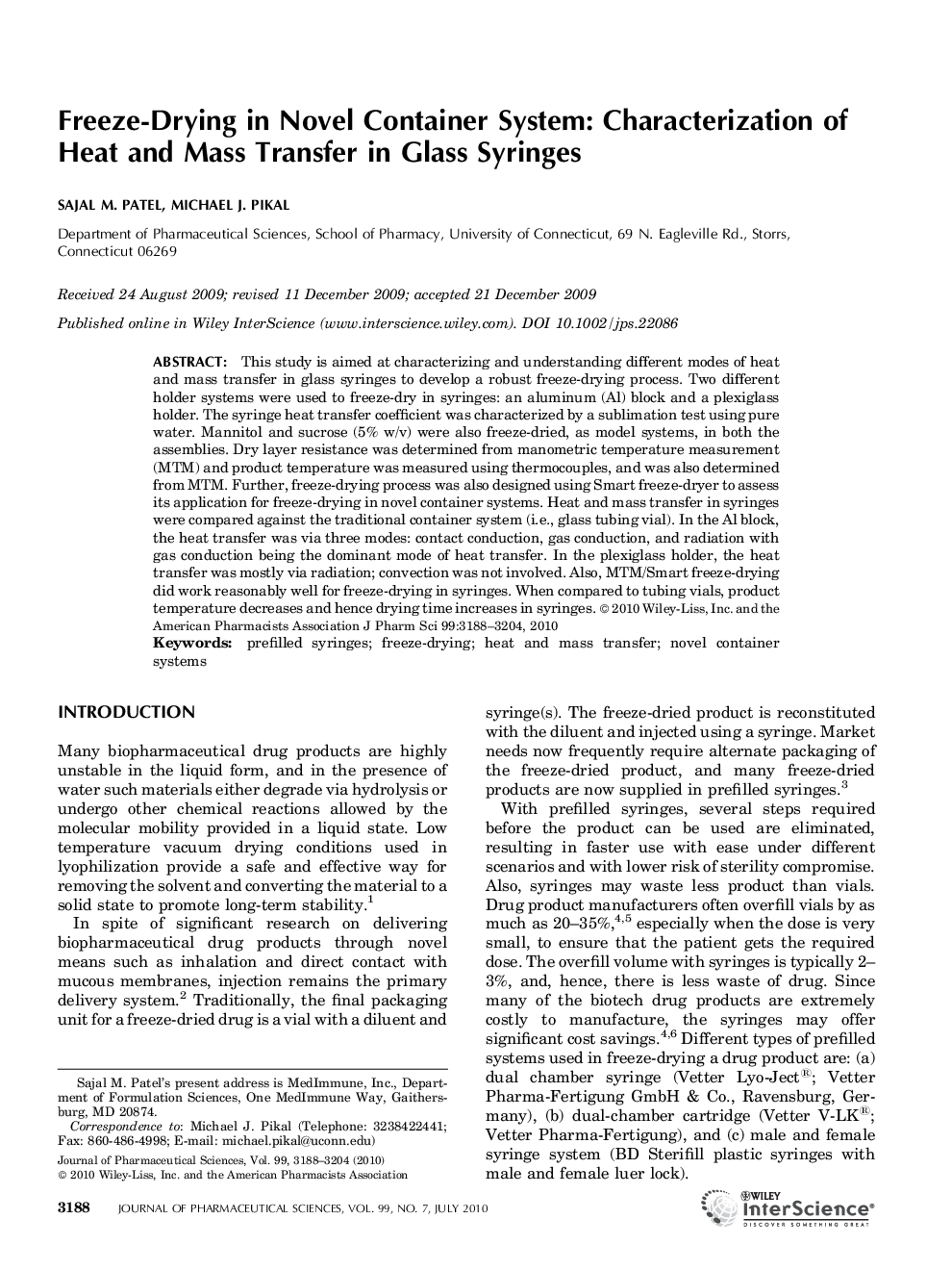| Article ID | Journal | Published Year | Pages | File Type |
|---|---|---|---|---|
| 2486283 | Journal of Pharmaceutical Sciences | 2010 | 17 Pages |
Abstract
This study is aimed at characterizing and understanding different modes of heat and mass transfer in glass syringes to develop a robust freeze-drying process. Two different holder systems were used to freeze-dry in syringes: an aluminum (Al) block and a plexiglass holder. The syringe heat transfer coefficient was characterized by a sublimation test using pure water. Mannitol and sucrose (5% w/v) were also freeze-dried, as model systems, in both the assemblies. Dry layer resistance was determined from manometric temperature measurement (MTM) and product temperature was measured using thermocouples, and was also determined from MTM. Further, freeze-drying process was also designed using Smart freeze-dryer to assess its application for freeze-drying in novel container systems. Heat and mass transfer in syringes were compared against the traditional container system (i.e., glass tubing vial). In the Al block, the heat transfer was via three modes: contact conduction, gas conduction, and radiation with gas conduction being the dominant mode of heat transfer. In the plexiglass holder, the heat transfer was mostly via radiation; convection was not involved. Also, MTM/Smart freeze-drying did work reasonably well for freeze-drying in syringes. When compared to tubing vials, product temperature decreases and hence drying time increases in syringes.
Related Topics
Health Sciences
Pharmacology, Toxicology and Pharmaceutical Science
Drug Discovery
Authors
Sajal M. Patel, Michael J. Pikal,
